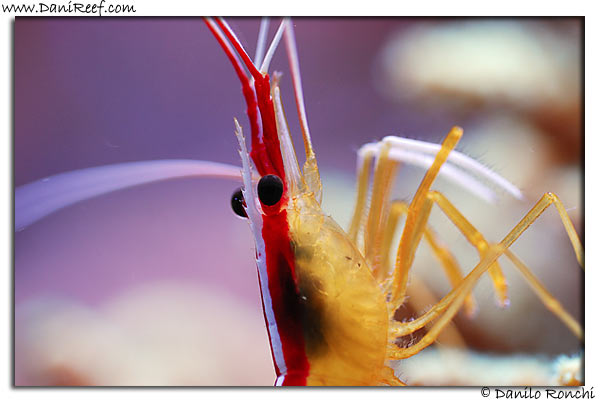
In the past article of this short series we illustrated two of the main features of plankton, size and classification (read here). We can now approach to how to supplement algae-based plankton (phytoplankton) or animal-based (zooplankton) into our tank.
This article is also available in: ![]() italiano
italiano
Being DaniReef is an on-line magazine dedicated mostly to marine aquariums, I have not considered the aspects for freshwater tanks, but many of the things covered so far are also applicable to freshwater aquariums.
For a reef aquarium with hard corals SPS and LPS with also an abundance of soft corals, the most useful plankton to have available is definitely the zooplankton: the animal component of plankton.
As we all know corals have the ability to feed through two different methods: firstly by their symbiotic algae, zooxanthellae, from which they get around 60-80% of their energy intake and secondly by the use of the nematocysts on their polyps tentacles, which actually predate on floating animal organisms by catching them and ingesting those of the right size.

Knowing that corals can effectively catch preys of adequate dimensions, we can now choose a culture of organisms of the right size and of easy maintenance and breeding, which will independently provide our corals with their preys.
Zooplankton in the tank
For SPS polyps of size between 1 and 2 mm we could count on keeping some animals in our tank which will breed and produce floating pico-zooplankton larvae. Such animals could be represented effectively by many species of molluscs, like small Cypraea spp. If we keep these animals in our tank they will often lay eggs, these eggs will give life to thousands of tiny larvae that floating around our tank by the aid of our water movement pumps will reach our corals polyps.

For SPS or LPS corals of bigger size and Zoanthus spp. we could offer some Lysmata shrimp larvae. These shrimps are usually hosted in our tanks because of their nice colors: they are hermaphrodites and usually breed spontaneously in aquariums. Eggs develop anchored on the parents abdomen and after hatching they release hundreds of small 2 mm larvae. They eventually float around the whole tank taken by the water movement causing feeding frenzy in fishes, corals and anemones.
These two examples show us how by choosing the right animals to host in our tank we can make sure that zooplankton of good nutritional quality is supplemented without costing us anything, with al the benefits for fishes and corals.
Many other organisms like copepods, amphipods and rotifers can be obtained through good quality live rocks. This should be considered when setting up a new tank and also in an older tanks, as these organisms will decrease in size and numbers over time. These types of zooplankton can be inoculated, every 3 to 6 months, using special preparations. The inoculation of these organisms does not have anything to do with a tank managed by a Deep Sand Bed (DSB) system, which is a method based on bacteria.
Aquarium plankton, the mistakes in the use of phytoplankton supplement at page two by clicking here.














